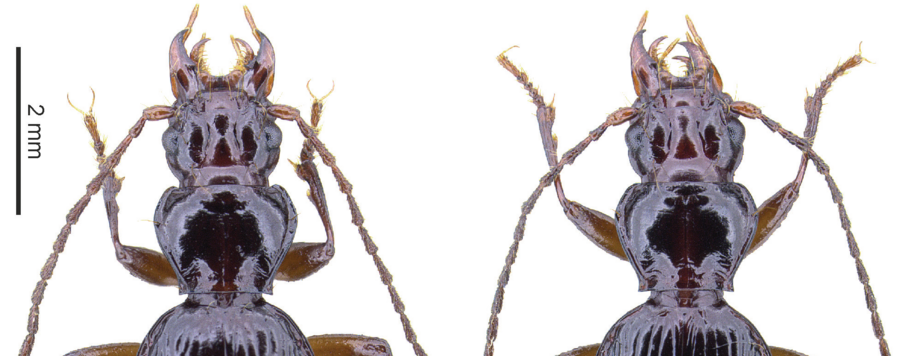
Explosive radiation versus old relicts: The complex history of Ethiopian Trechina, with description of a new genus and a new subgenus (Coleoptera, Carabidae, Trechini)
The trechine beetle fauna (Coleoptera, Carabidae) of the Ethiopian Highlands is known to be highly diverse in species, and many species groups were recognized to be characterized by unusual character states of external and genital morphology. Earlier authors described several genera and subgenera of Ethiopian Trechina endemic to certain high mountains of the country. However, the relationships of these species groups and their evolutionary history are unknown so far. Here, we present the first molecular phylogenetic analysis of Ethiopian Trechina, detect several synonymic names under Trechus sensu lato, and introduce two new species groups to the country’s fauna: the monotypic genus Baehria Schmidt & Faille, gen. nov., with the type species B. separata sp. nov. from Mt. Choke in northern Ethiopia, and the Trechus subgenus Abunetrechus Schmidt & Faille, subgen. nov., with the type species T. bipartitus Raffray, 1885; this subgenus includes three species of northern Ethiopia. We show that the composition of the Ethiopian fauna is based on multiple events of immigration, which started simultaneously with or some million years after the Oligocene-Early Miocene orogenic events north and south of the Rift Valley. Our results support the habitat island hypothesis for the evolution of the Ethiopian highland fauna. We found no evidence for an alternative hypothesis assuming a close connection of the Trechina immigration to Ethiopia and Pleistocene cooling. We, thus, conclude that the geomorphological development rather than the climatic changes are the main drivers of the diversification of the high-altitude Trechina fauna in Ethiopia.






